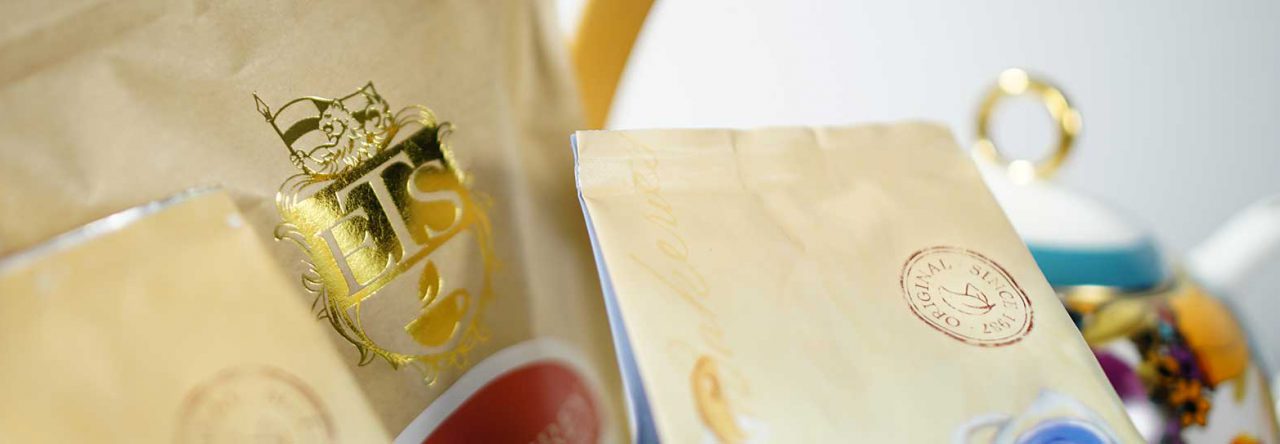Never heard of teas from Nepal? Never heard of Nepal? Okay. I understand. They and the country they come from aren’t on everyone’s radar. All the more reason to shine a spotlight on them here.

Topography and Teas Grown
Between two tea growing giants (China and India) lies the country of Nepal. Nepal teas are considered comparable to “classic” Darjeeling tea but sell at a more affordable price. This similarity with Darjeeling tea is because the main tea producing regions in eastern Nepal have more or less the same geographical and topographical conditions as the Darjeeling tea growing areas.
The aroma, fusion, taste, and color of these teas are considered superior to those of Darjeeling teas, but their low production quantities cannot meet a high demand and so keep these teas from gaining a big place in the market. The teas are produced both as orthodox and as CTC teas.
Orthodox Nepalese tea has four flushes (periods of growth):
- First flush — 4th week of March through end of April. Tender leaves. Light yellowish-green liquid. Delicate taste. Subtle aroma and flavor. The most expensive of the flushes due to the low quantity produced and high demand.
- Second flush — 2nd week of May to last week of July. Stronger and more characteristic flavor that some say is the best of the four flushes.
- Monsoon flush (“Rainy tea”) — last week of July through end of September. The leaves are growing during a period of almost continuous rainfall. They soak up the water and also grow faster, causing them to steep up a darker tea with full color and strength.
- Autumn flush — October to end of November. The leaves infuse a liquid with a musky flavors, tangy aromas and amber color.
Tea leaves harvested for CTC processing go by a slightly different schedule of flushes since they are grown in different locations and so have different conditions. CTC tea is more or less uniform for each flush, exhibiting strong color and subtle aroma in the liquid.
Types of Nepalese Teas
- Ilam Tea — A Darjeeling-like character with good muscatel flavor from the altitude of the tea estate, the soil conditions in the Himalayas, the weather patterns and temperature, the originating species of the bush (Camellia Sinensis sinensis) and fermenting techniques. The leaf appearance is mottled brownish and greenish caused by different mother bushes, the older age of the bushes, and that the leaves oxidize differently.
- Black Tea — Fully oxidized, turning the leaves black. The quality and taste depends on the variety of tea plant, where grown, weather during the growing season, the time of year harvested, how processed, and the care taken in processing.
- Green Tea — From the foothills of Nepal’s towering peaks. Fresh, clean flavor in perfect harmony with the calmness and spirituality for which the region is known. Soft, sweet aroma, pristine floral notes and gentle sweetness. Unusually tippy with tender young leaves that produce a cup lighter in color and flavor than Darjeeling tea, but more rich than normal for a green tea.
- White Tea — A prized tea that is the purest, least processed tea available. Low in caffeine and especially rich in antioxidants. Silver tips are delicate leaf-buds at the point of unfurling. Harvested from a selected variety of tea bush that boasts young tender buds freshly plucked right before opening. Savory aroma, rich body, and smooth delicate cup. A smooth, sweet taste.
- Oolong Tea — The leaves have been rolled so that their juices start to oxidize. A very delicate color and flavor. Grown high in the pristine mountain air of the Himalayas. Combines the characteristics of a high-grown Darjeeling and a soulful Oolong.
Don’t miss our next stop on this virtual world tea tour!
See more of A.C. Cargill’s articles here.
© Online Stores, Inc., and The English Tea Store Blog, 2009-2014. Unauthorized use and/or duplication of this material without express and written permission from this article’s author and/or the blog’s owner is strictly prohibited. Excerpts and links may be used, provided that full and clear credit is given to Online Stores, Inc., and The English Tea Store Blog with appropriate and specific direction to the original content.



Leave a comment